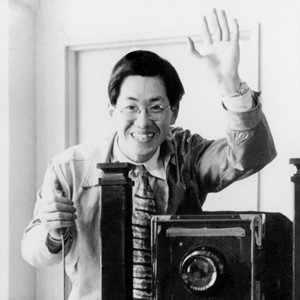External links
- "Shashin hyōronka Iizawa Kōtarō: Shashin to kotoba" (写真評論家飯沢耕太郎:写真と言葉, Kohtaro Iizawa, photo critic: Photography and language). Bunka kaigi.(in Japanese) A wide-ranging interview with Iizawa.
Kōtarō Iizawa (飯沢 耕太郎, Iizawa Kōtarō, born March 26, 1954) [1] is a Japanese photography critic, historian of photography, and magazine editor. Born in Sendai, Miyagi in 1954, Iizawa studied photography in Nihon University, graduating in 1977. He obtained his doctorate at University of Tsukuba. Iizawa founded Déjà-vu in 1990 and was its editor in chief until 1994. He coedited the 41-volume series Nihon no Shashinka with Shigeichi Nagano and Naoyuki Kinoshita.

Ihei Kimura was one of the most celebrated Japanese photographers of the twentieth century, particularly known for his portrayal of Tokyo and Akita Prefecture.
Masao Horino was one of the most prominent Japanese photographers in the first half of the 20th century in Japan.
Yutaka Takanashi is a Japanese photographer who has photographed fashion, urban design, and city life, and is best known for his depiction of Tokyo.

Shigeru Tamura was a Japanese photographer notable for his work in fashion and photojournalism.
Takanobu Hayashi is a Japanese photographer.
Tadahiko Hayashi was a Japanese photographer noted for a wide range of work including documentary and portraiture.
Taiji Arita was a Japanese commercial photographer who exhibited non-commercial nudes and other work, and later a painter and sculptor.
Yoshino Ōishi is a Japanese photojournalist.

Motoichi Kumagai was a Japanese photographer and illustrator of books for children, known for his portrayal of rural and school life. He has illustrated numerous children's books, books containing his photography, and other works. His works have won prizes, beginning with a photography prize from the Mainichi Shimbun in 1955.
Kiyoshi Suzuki was a Japanese photographer. He began photographing in the late 1960s in Iwaki, where he was born on 30 November 1943. He worked for thirty years in relative isolation. Suzuki's way of designing his photography books, layer upon layer upon layer, became central to his art.
Toyoko Tokiwa was a Japanese photographer best known for her 1957 book of text and photographs Kiken na Adabana, and particularly for its portrayal of the red-light district of post-occupation Yokohama, with US servicemen.
Tadao Tominari was a Japanese nature photographer.

Ken Domon is one of the most renowned Japanese photographers of the 20th century. He is most celebrated as a photojournalist, though he may have been most prolific as a photographer of Buddhist temples and statuary.
Shigeichi Nagano was a Japanese photographer. He won the Ina Nobuo Award in 1986 and had a major retrospective at the Tokyo Metropolitan Museum of Photography in 2000.

Yōnosuke Natori was a Japanese photographer and editor.

Hiroshi Hamaya was a Japanese photographer active from 1935 to 1999. In particular, Hamaya was known for his photographs of rural Japan.
Katsuji Fukuda was a Japanese photographer known for his photographs of still lifes and nudes, and also a writer of practical books about photography.
Norihiko Matsumoto is a Japanese writer on photography, and photographer.

Jun Miki was a Japanese photographer and one of Japan's pioneers in photojournalism. The Selection Committee of Nikon Salon established the Miki Jun Award in 1999 to remember his legacy.
Minoru Minami was a Japanese photographer. He served as the founding editor-in-chief of the photography magazine Geijutsu shashin kenkyu.